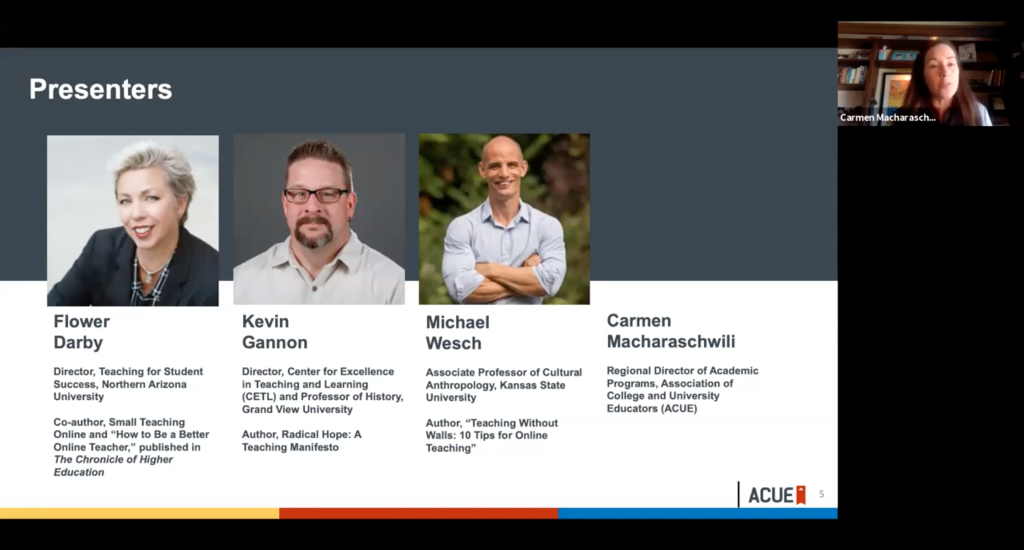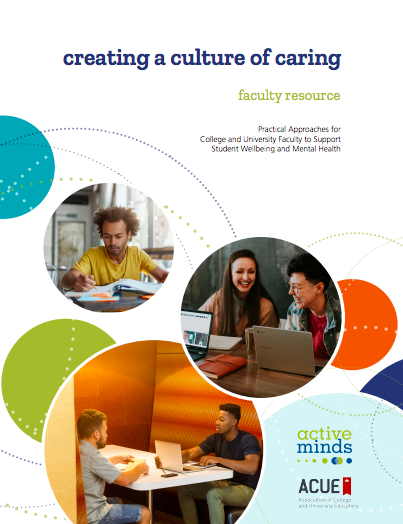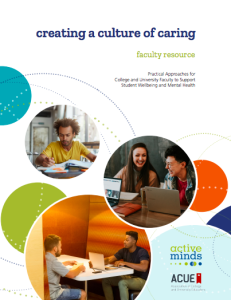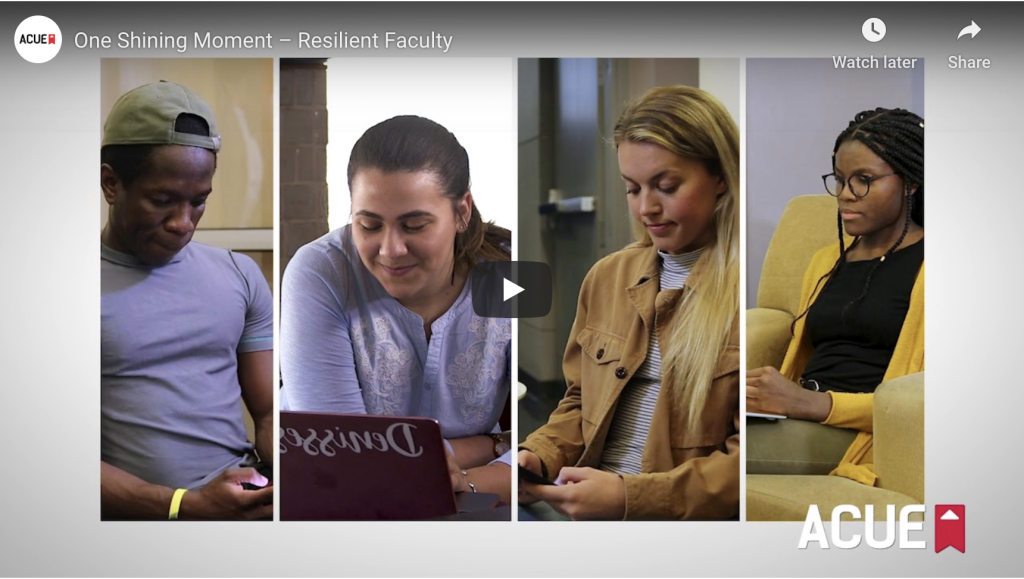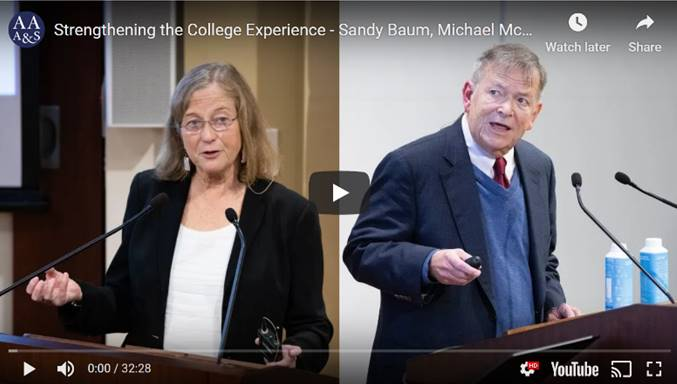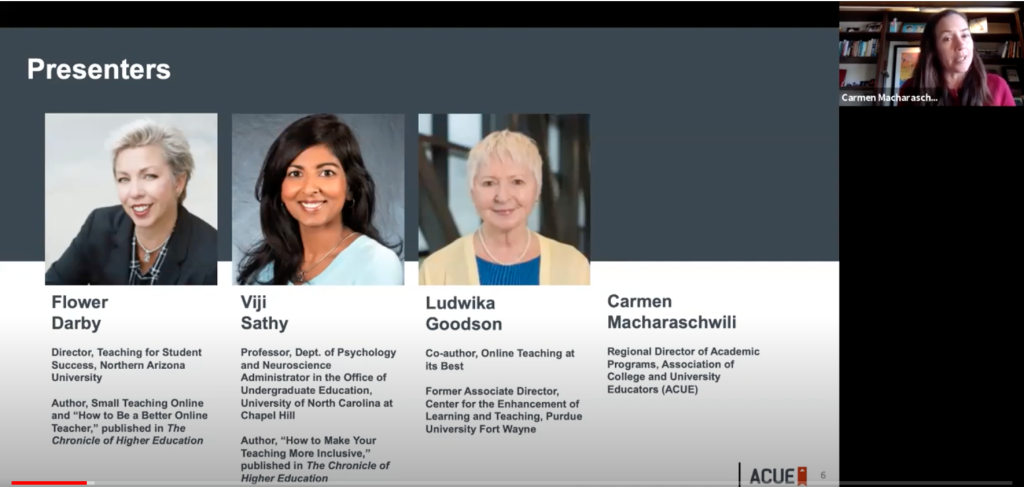
Planning and Facilitating Quality Discussions
Moving courses online with little-to-no advance warning has presented myriad challenges to instructors and students alike. One particularly difficult aspect to recreate in a digital environment is discussions. In the webinar “Planning and Facilitating Quality Discussions,” experts Ludwika Goodson, Viji Sathy, and Flower Darby explored the advantages of an online setting and how to continue to have fruitful conversations in this forum.
This was the fourth installment of ACUE’s six-part series, Effective Online Instruction Webinars, presented in collaboration with the American Council on Education, the Association of Public and Land-grant Universities, the National Association of System Heads, American Association of State Colleges and Universities, and The Council of Independent Colleges.
Goodson noted that there are some benefits to holding discussions online. “You can see how students are thinking,” she said. She added that some of the more reluctant students are inclined to participate in this forum over an in-person one. She also advised setting up an online office and giving it a name that encourages students to frequent it, such as the “Jazz Lounge” or “Green Room,” as well as establishing a virtual study hall, where students can share difficulties and collaborate on solutions.
Goodson offered a series of principles for holding online discussions: communication guidelines; directions, questions, and challenges; wait time; and whether or not to grade. For example, in the first instance, she suggested that writing in all caps comes across as shouting.
Sathy, who teaches quantitative courses, noted that one challenge of transferring to an online format is keeping a peer-instruction component in place. To that end, she holds micro-discussions, in which students work together to solve a problem. She suggested including very specific prompts and providing structure so students are clear about what they should be doing.
“Students need to understand expectations,” she said.
Sathy also advised setting up a discussion forum for students to post and answer questions. This, she said, is especially useful for quieter students and those who feel self-conscious about asking questions in class. Instructors can “like” correct or helpful responses they see from other students.
“Think about access to questions,” Sathy added, explaining that if a student asks a question that others might have, the instructor should send the response to the entire class.
Darby agrees that discussions need structure and advises offering “all the support and guidance we can give students” possible.
Through online discussions, she opines, “we can interact with our students in the moment.” Her suggestions include exploring how students can relate to current events.
However, she cautions that online discussion don’t just happen naturally but require intentional thought and planning. Like her co-presenters, she encourages instructors to communicate clear expectations (“help students know exactly what you want them to do to foster success”), schedule strategically, and provide feedback. She suggests using rubrics or checklists to grade, such as Linda Nilson’s Specifications Grading approach.
In the question-and-answer portion of the webinar, many participants wondered how instructors can ensure that students are engaged, participating, and posing quality questions and answers.
Goodson commented that many LMSs allow instructors to see which students are participating and how often. As an instructor, she said you can also highlight what’s coming up in discussion and acknowledge what a student has said. “Ask another question to encourage deeper thinking,” she suggested. She also raised an example of a fashion design course, in which the instructor challenged students to search for their favorite design online and explain why they chose it, comparing it to the original examples.
“Focus on ‘discussable’ questions,” Darby added. She encouraged her colleagues to ask students to write about themselves and how their experiences interact with course concepts. This, she said, promotes “natural engagement” and fosters more authentic engagement, along with academic integrity. “You can’t Google your own experience,” she remarked. “Focus on the relevance of what we’re asking students to do.”
“We should be clear about why we expect engagement,” Sathy added. “What students stand to gain.”
“It’s important to consider all the ways students can participate.” For example, Sathy experiments with polling and repolling students after a discussion about the answers. She also makes poll questions available to students who aren’t able to participate synchronously and encourages students to text her with questions.
The presenters also discussed topics such as inclusivity and addressing hurtful comments and language in discussions. “ The instructor needs to create guidelines and remember that these comments are in writing,” Darby said. She suggested deleting particularly upsetting comments, as well as reaching out to the person who was targeted and the perpetrator. “You need to make everyone feel safe.”
To watch the full webinar or read a transcript of the session, visit our Planning and Facilitating Quality Discussions resource page. You’ll also be able to access additional materials and join in the discussion. For faculty looking to delve further into online learning strategies, check out ACUE’s micro-credential courses.

